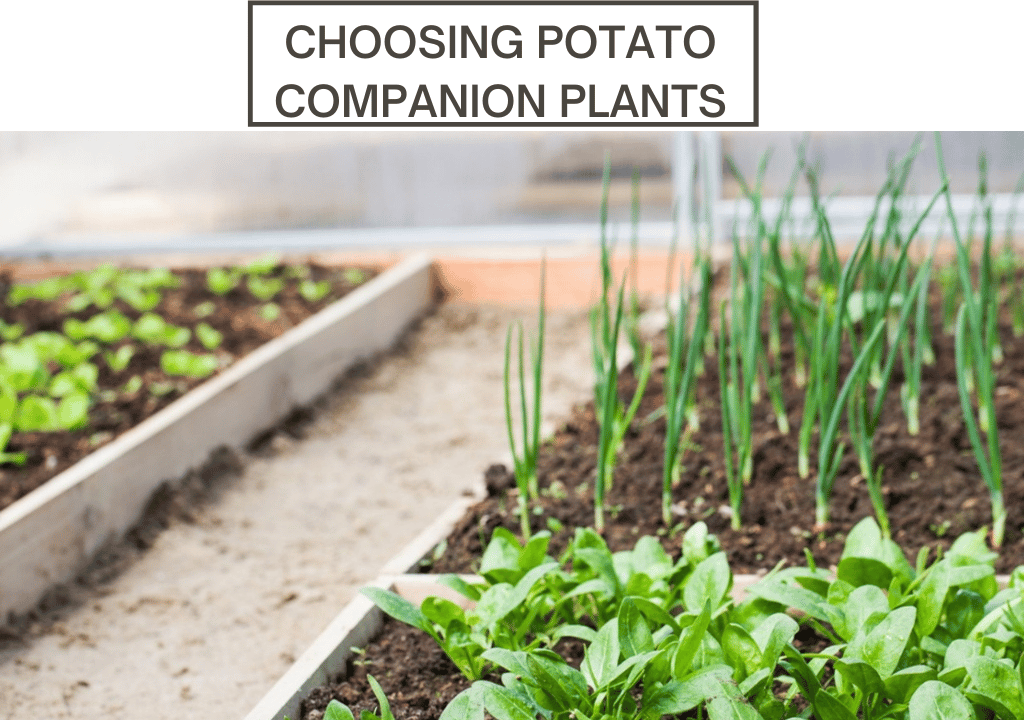Choosing Potato Companion Plants
Types of Companion plants:
Spinach Prevents water Evaporation:
When growing potatoes, you can plant several companion plants around your crop. Spinach is an excellent choice, as it can help to prevent water evaporation from your soil, and it also attracts beneficial insects to your potato patch. Additionally, spinach has a pleasant appearance that complements a potato patch. Since potatoes and spinach are related, they are susceptible to some of the same diseases and pests.
Alyssum prevents predatory attacks:
Alyssum is an excellent ground cover and can help maintain soil moisture. It can also attract predatory wasps that feed on pests that attack potatoes. Regardless of the type of companion plants you choose, you’ll want to avoid planting plants that compete with the potato. While most plants will tolerate potatoes, there are some that won’t be able to grow near them.
Borage help potatoes gain access to essential nutrients:
Borage is another plant to consider as a companion plant. Borage has a deep taproot that can help potatoes gain access to essential nutrients in the soil. It also attracts pest-eating insects such as ladybugs. Another good choice for companion planting is petunias, which will deter pests and add color to the garden.

Calendula helps in Potato Pollination:
Calendula is another good choice. Calendula has strong wildlife-attracting properties and works well in potato polycultures. Nasturtiums are also useful companion plants. They are commonly used with summer crops and cucurbits. However, you must be careful to choose companion plants based on their maturity and needs.
Marigold Prevents from Disease and help in growth:
Another excellent companion plant for potatoes is marigold. This perennial plant has many benefits, including repelling nematodes, which can damage potatoes. Marigolds also attract beneficial insects and repel whiteflies. These companion plants can also attract large pollinators like birds. The marigold’s fragrance will also help prevent diseases caused by eel worm.
Cilantro Helps in enhancing Potato Flavor:
Cilantro is also a good companion plant for potatoes. It helps repel aphids and attracts bees. Both plants are beneficial to each other, and cilantro also provides a ground cover between the two plants. As a bonus, the cilantro will produce coriander seeds, which can help boost the flavor of the potatoes.
Thyme provides shade for Potato plant:
Another herb that works well with potatoes is thyme. This perennial plant is good for potatoes because it attracts hoverflies which help reduce aphids. Thyme also acts as a companion plant, as it provides shade and attracts beneficial insects. In addition, it adds a nice scent and deters flea beetles, which can harm the potato.
Potatoes are easy to grow:
Potatoes are a staple crop on many homesteads. While they require a large amount of space and fertile soil, they’re not difficult to grow. With the right companion plants and the right variety, you can enjoy fresh potatoes year round. You can even store them for many months. Just remember to choose the right companion plants and varieties for the soil and climate conditions where you live. If you’re just starting out in potato gardening, you’ll want to source your seed potatoes from a reputable source. It’s also a good idea to chit your potatoes to get a head start.
Some plants no much favorable to Potato Plant:
Some companion plants work well with potatoes, while others aren’t so friendly. For instance, alyssum attracts both pollinators and predatory wasps. Another good choice is yarrow. It attracts ladybugs and other beneficial insects. However, it won’t work well with sweet potatoes, since both plants grow similarly and compete for space and sunlight. They are also susceptible to diseases.

